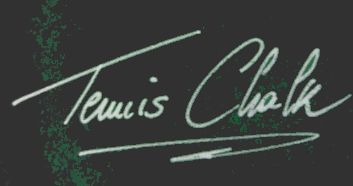St. Louis’ Rich Tennis History
Butch Buchholz, whose given name is “Earl” and is a Jr., was born in St. Louis, Missouri in 1940. Before Nick Bollettieri turned Bradenton, Florida into the tennis training/player development “Promised Land” and Vic Braden and Robert Lansdorp did the same in Rolling Hills Estates, California, St. Louis had made its mark… And it was for much more than being the “Gate Way to the West” built by French traders (above the banks of the Mississippi River) and sold to the US in 1803 as part of the Louisiana Purchase… Digging deeper, the city was the home of ragtime and St. Louis “Jump” Blues music, along with the Anheuser-Busch Brewery made famous by the signature Clydesdale horses…
***
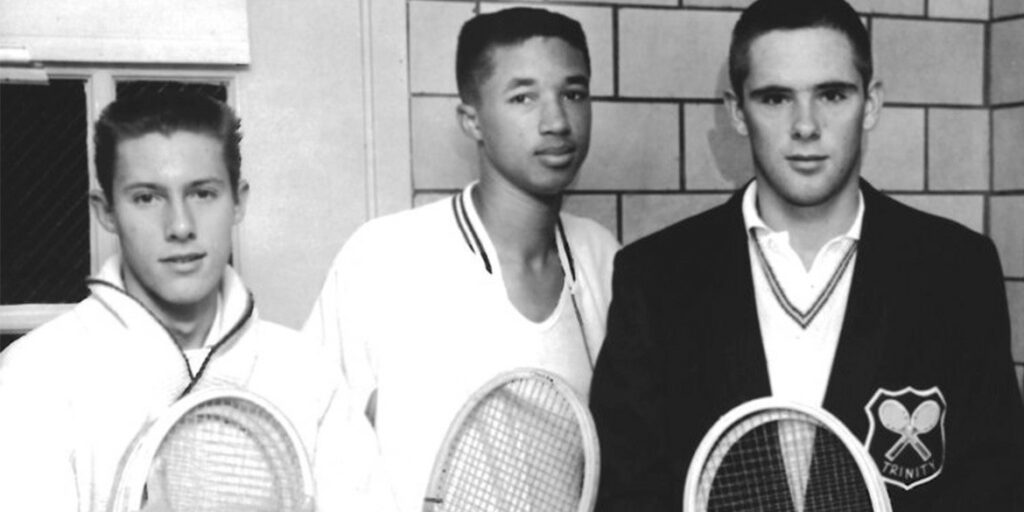
Besides Buchholz, a 2005 International Tennis Hall of Fame inductee, and his brother Cliff, local tennis luminaries included another brother duo Bob and Chuck McKinley (a 1986 Hall of Fame honoree) …along with Justina (née Brinka) Horwitz, Carol (née Hanks) Aucamp and Mary Ann (née Eisel) Beattie. Jimmy Connors, Ken and Doug Flach, Jimmie Parker and Renne Blount also used St. Louis to launch their tennis careers.
As O’Neal pointed out, “…it is worth noting Butch’s St. Louis tennis heritage. His dad, Earl Buchholz Sr., was a tennis instructor at numerous tennis locations around the city… He did not drive a car…He bussed around town. He is credited with teaching more St. Louisans’ tennis, by far, than anyone else…”
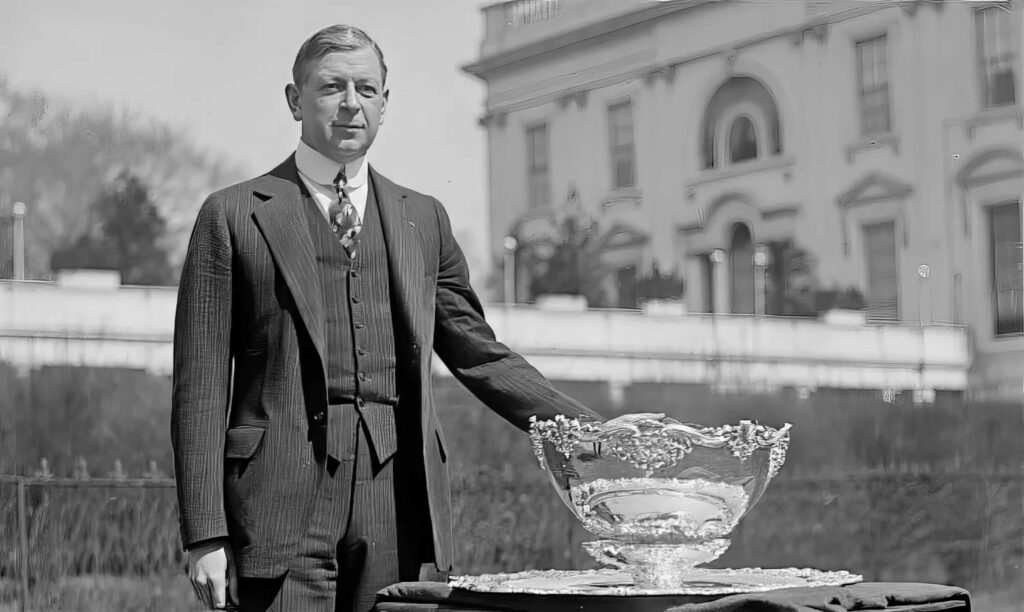
The city’s tennis pedigree is further enhanced by the fact that Dwight Davis of Davis Cup fame was from St. Louis. In addition, Arthur Ashe left Richmond, Virginia and spent his senior year at a local high school in 1960 because of the competitive opportunities available …as well as the guidance he would receive from Richard Hudlin.
***
It is well documented how Dr. Robert Johnson, who became a Hall of Fame member in 2009, was the “Godfather of Black Tennis”. An obstetrician, he had a tennis court built in the backyard of his home on Pierce Street in Lynchburg, Virginia. Ashe and Althea Gibson were just two of the African American tennis players he mentored.
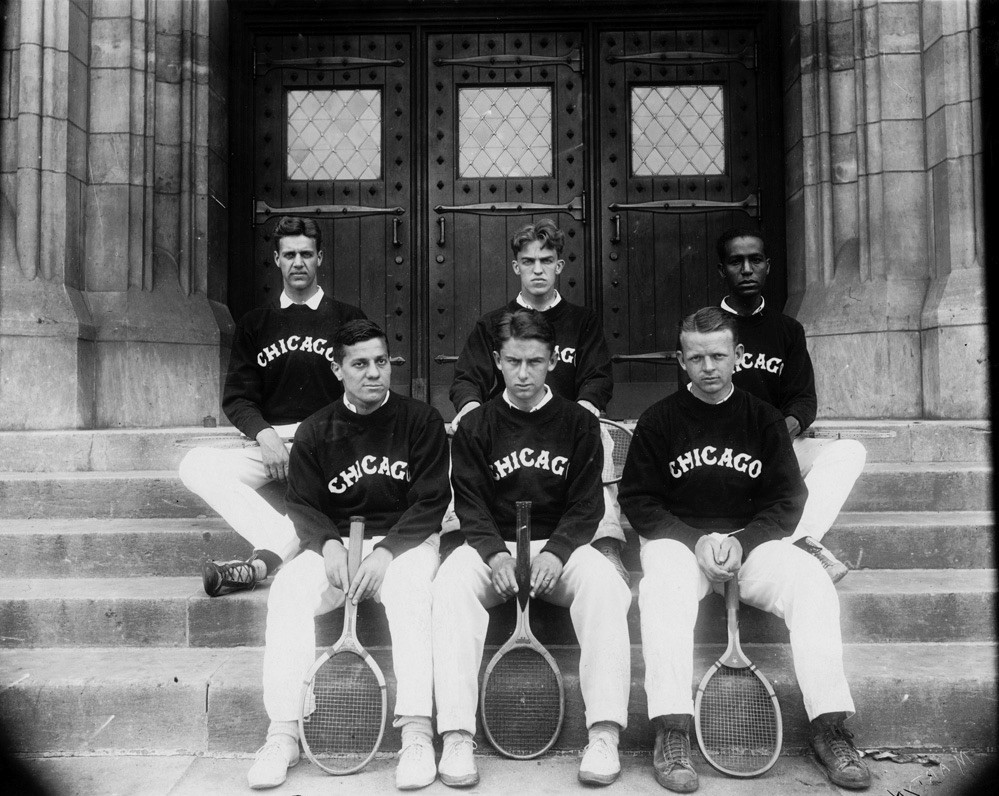
Hudlin, a friend of Johnson’s, is regularly overlooked when it comes to role he played in Ashe’s career. He was an outstanding player on the University of Chicago tennis team, which he captained in 1928 during the days of segregation. After receiving his degree, he came to St. Louis to teach at Sumner High School (which Ashe attended and graduated first academically in his class). When Hudlin wasn’t in the classroom his fervorto make life better for youngsters carried over to teaching tennis.
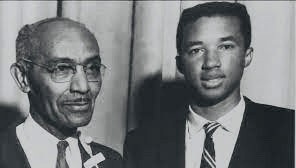
In 1945, he sued the Muny Tennis Association of St. Louis because he wanted to give free tennis lessons at Tandy Park but, in those days, everyone was not able to use the city’s tennis courts. He won the legal battle enabling African Americans, along with others from the minority community, to play on and participate in tennis tournaments held at public park tennis courts.
(An interesting aside – Like Johnson, Hudlin had a tennis court at his home, but it wasn’t in the backyard it was on the side of his house.)
***
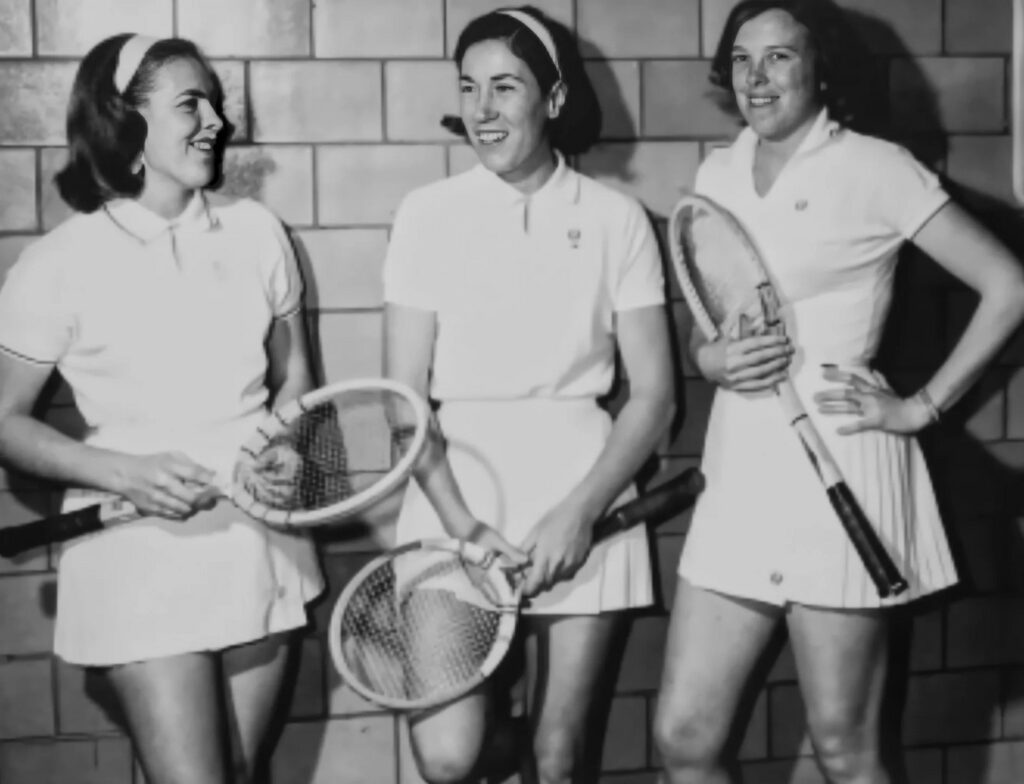
In a May 22, 2012, story titled, “Beattie part of 1960s tennis hotbed in St. Louis”, Jim Henry, the Joplin Globe Sports Editor, described how vibrant the tennis scene was in St. Louis. He noted that in 1964 three members of the US Women’s Top 10-Bricka, Eisel and Hanks-lived there.
Beattie, a five-time US National Indoor Women’s Doubles champion (twice with Hanks, who was a four-time tournament winner overall), told Henry that before the days when every city had indoor tennis facilities, “There was one indoor club where we all played all winter long – The Armory. They had five indoor courts, and every player out of St. Louis came and played in the Armory. Everyone competed against each other, and we all became good friends.
“And there were two great coaches, Earl Buchholz Sr., and Bill Price. Bill Price was my coach, and he coached as a hobby. He never charged any of us a fee. Bill Price was the type of coach who never got on the court with you. He’d sit and watch you, and when you came off the court, he would tell you one or two things, and you never forgot those one or two things…”
***

Those who played at the dimly lit Armory, which opened in 1938 and was the home of the 138th Infantry Missouri National Guard, adapted to the ice-slick quickness of the wood surface by having compact groundstrokes because the ball came at them so quickly.
The Armory, once the home of the St. Louis Tennis Club, was unoccupied for almost 20 years. In 2015, a $60 million refurbishment project commenced. The facility, now an entertainment complex which opened in December 2022, will become the home of the St. Louis Tennis Hall of Fame.
Last December, O’Neal, who is on the committee to move the Hall of Fame, wrote, “The Armory opens this week but the part with the St. Louis Tennis Hall of Fame, which is on the mezzanine level, hopefully will open in about a year. The venue will have 3500 square feet and an outside wall exposure that should generate some sponsor income.”
***
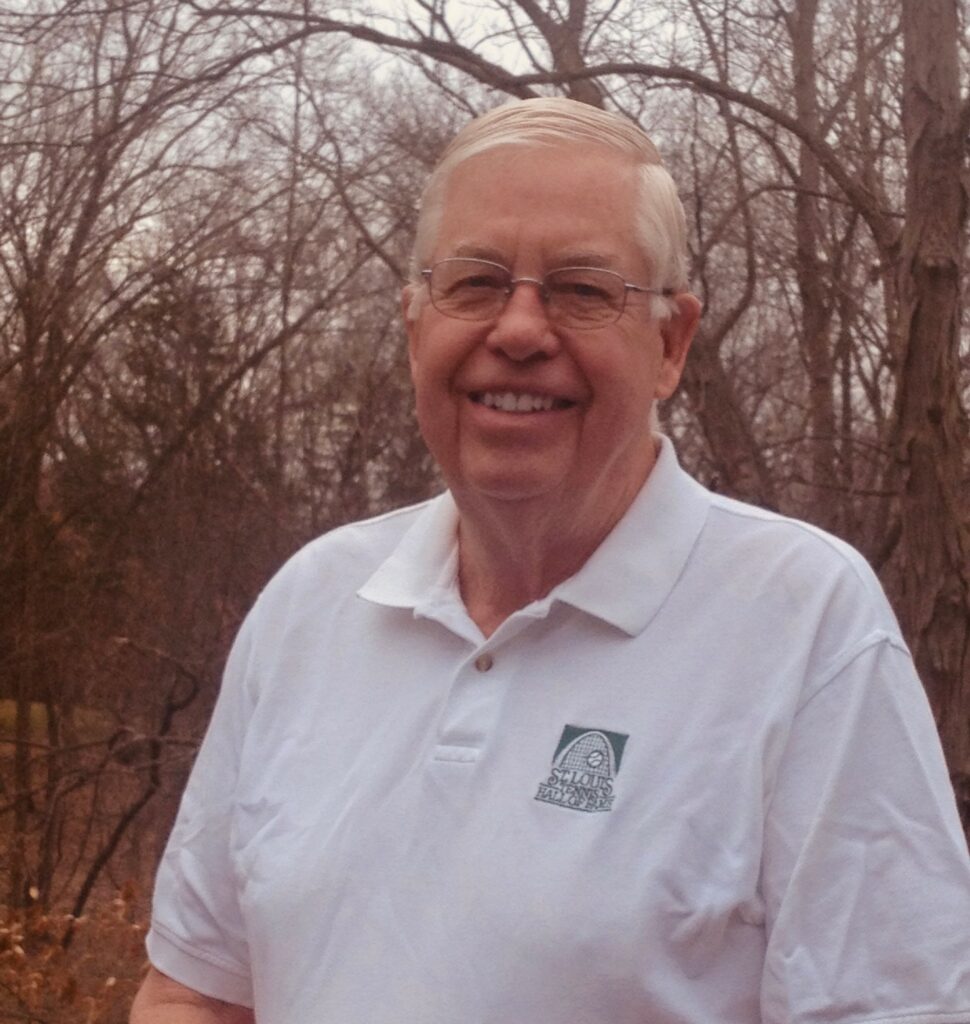
O’Neal, who created the Hall of Fame in 1990, noted, “I founded the St. Louis Tennis Hall of Fame with two objectives: to raise funds for junior tennis development and facilities at the Triple A Club, and to honor and preserve the proud history of tennis accomplishment of St. Louis. The idea was to broaden the impact of tennis in St. Louis and further the development of junior tennis here.
“Jack Eggmann was a boyhood pal who knew a lot about the tennis history as his dad was a great player and deeply involved at the Triple A Club (His dad played in the mixed doubles exhibition match there with the Wimbledon Champion Helen Wills Moody and Jack was one of the ball kids). Jack often told me of bits of the history when he had me start playing tennis after grad school. He became my archivist to get the facts about Hall of Fame candidates which later led him to write his book (The Root of Tennis “Blue Bloods to Blue Collars”).”
The inaugural inductees were Carol Hanks Aucamp, Mary Ann Eisel Beattie, Justina Brinks, Earl “Butch” Buchholz, Dwight F. Davis, Chuck McKinley, and Bill Price. The Selection Committee included Brinka, Ron Cobb, Eggmann, and Leigh Strassner.
Hall of Fame projects are not easy to support which is the reason O’Neal relied on his business acumen and connections. He explained, “The fundraising function was a one-day Festival that featured past tennis stars, with a morning Pro-Am for sponsors, an exhibition match featuring the stars, and an induction ceremony and dinner.
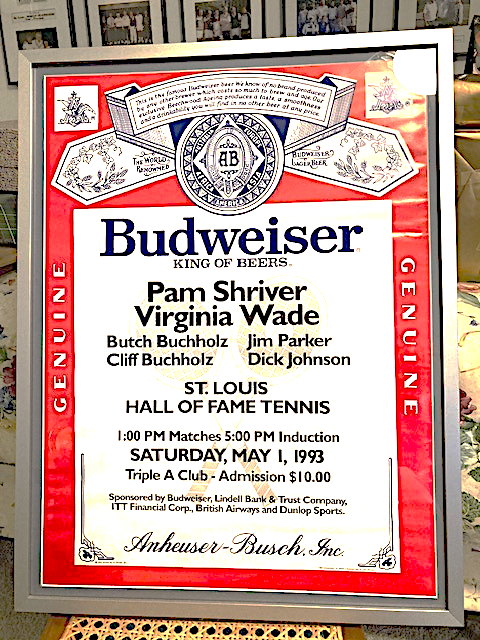
Poster Tom O’Neal Collection
“The first year Laver played the exhibition match with Dick Johnson, the Head Pro at the St. Louis Country against Butch and Terry Ward, Director of Tennis at Old Warson Country Club.”
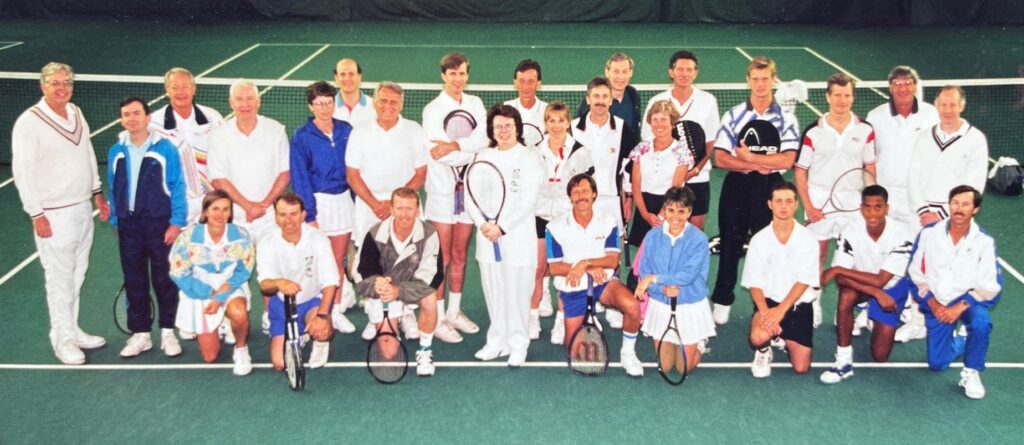
O’Neal continued, “The key to the fundraising Festivals was getting the past stars to come, and over the years Butch used his considerable influence to attract past greats to attend and play in the Pro-Ams including: González, Segura and Olmedo in 1991; Stan Smith and Arthur Ashe in 1992, Pam Shriver and Virginia Wade in 1993; John Newcombe, Owen Davidson and Sherwood Stewart in 1994; Billie Jean King and Ilana Kloss in 1995; Roy Emerson, Dennis Ralston, Owen Davidson (again) and Jonathan Canter ( who played for the St. Louis Aces) in 1996; Tom Gorman, Dick Stockton and Charlie Pasarell in 1997; Ken and Doug Flach in 1998; and Tony Trabert in 1999. With their help we raised more than $30K each year.”
***
Even more significant, the Hall of Fame led to O’Neal’s friendship with Buchholz. “I met Butch when I asked for his support and involvement for the Hall of Fame in 1989,” O’Neal remembered. “He came to all of the annual Hall of Fame Festivals starting in 1990 and is still involved.”
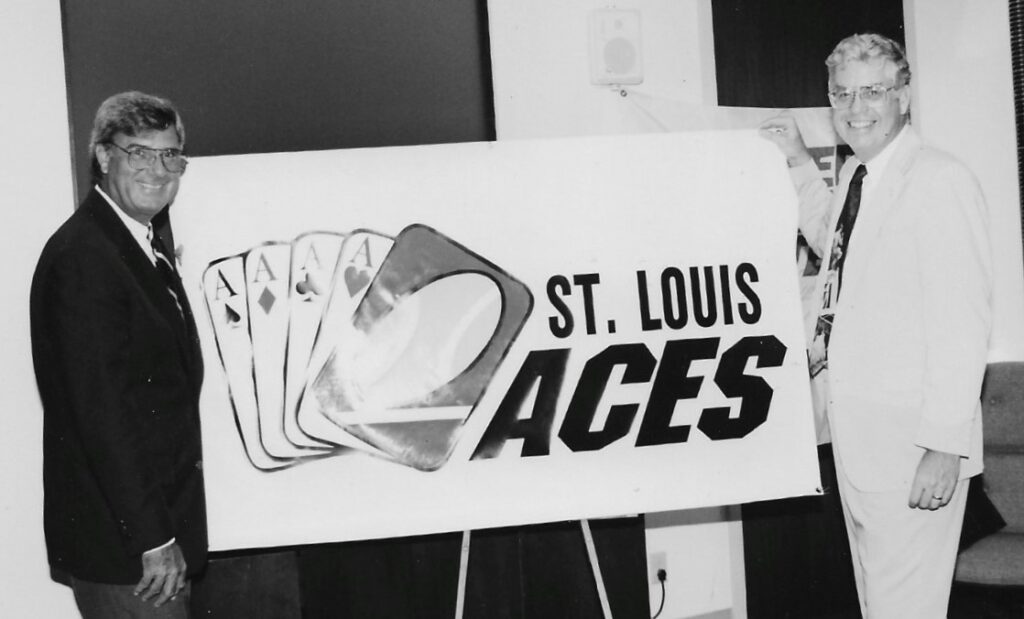
In the beginning of the story, I referred to O’Neal as “More Than…” a Renaissance Man…an observation that is supported by another of his local tennis endeavors. He explained, “I met Jack Levitt at Triple A and complained that kids in St. Louis can’t see professional tennis. He said, ‘OK, let’s do something about…’ So, we co-founded the World TeamTennis St. Louis Aces in 1993. Our first match was in 1994. We played most of the time at the Dwight Davis Tennis Center except one year when we played at the Doubletree Hotel’s Tennis Club in Chesterfield, Missouri.
“We won the WTT championship in 1996 with Michael Joyce, Rick Leach, Lisa Raymond, and Rennae Stubbs. I co-managed the team from 1994 until ’97. Then I left St. Louis and went to work for Butch developing sponsor contacts for the Lipton Tournament at Crandon Park in Key Biscayne, Florida. I was there from 1998 until 2000. When IMG bought the tournament, I moved to golf and worked at the Doral Open in 2001 and ’02. In ’03, I became the Executive Director of Advancement at the University of Missouri College of Business (basically I was a ‘fundraiser’) where I remained until I retired in 2019.”
***
After finishing Harvard Business Graduate School, O’Neal joined the marketing staff for Procter & Gamble and began living in Europe. Looking for a way to get some physical activity, (he admitted, in his younger days, having been the Men’s Class B short-track speed skating champion but told St. Louis Post-Dispatch columnist Ron Cobb, “I wasn’t good enough to skate with the good skaters…”), he and his wife, Gretchen took up tennis when they were living in Brussels, Belgium. From there with P&G stops in Paris, The Hague, Cincinnati, San Juan Puerto Rico and back to Cincinnati, they followed a routine. Find the P&G office, the nearest tennis club, and a place to live.
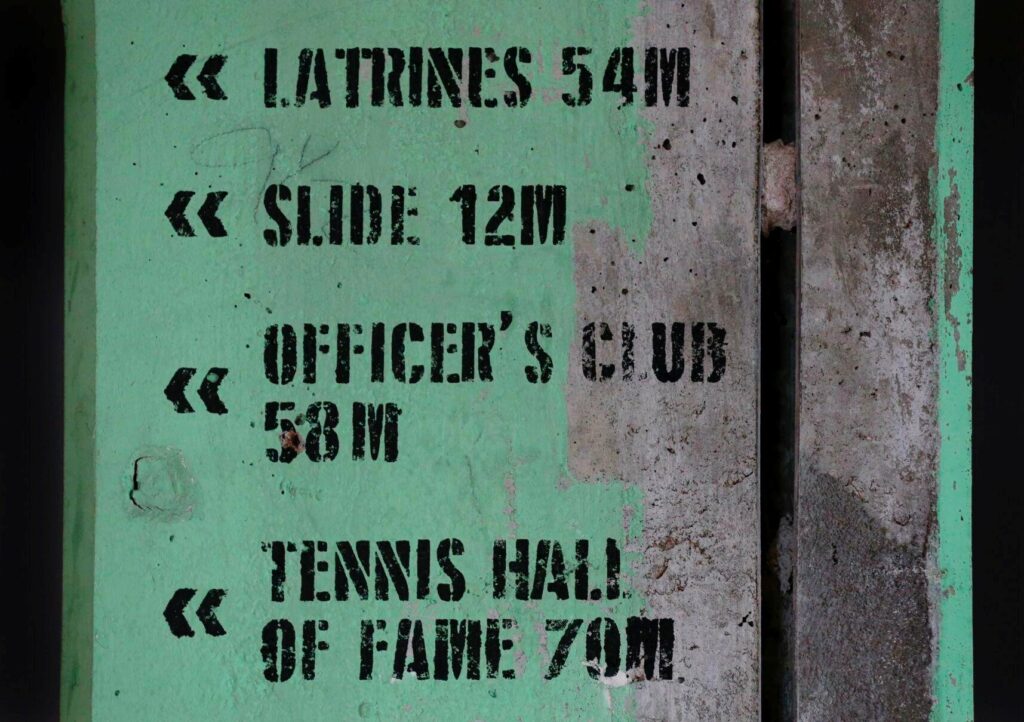
A 2019 inductee, O’Neal admitted that prior to the opening of the St. Louis Tennis Hall of Fame to the public, “We have to raise funds first before the build-out of the Hall is finished, so probably late in 2024 at best.”
The 2024 St. Louis Tennis Hall of Fame induction ceremony will take place next April. The honorees, an esteemed group of coaches, mentors, players, and teachers, include Kent DeMars, Ben Loeb, Annie Menees, Kiki Stastny Nash, Jennifer Prah, Blake Strode and Aleke Tsoubanos which will bring the total of those saluted since 1990 to 84.
On Saturday evening April 27th, a Doubles Classic, which has replaced the annual Festival, will be held at the Frontenac Racquet Club. Buchholz will attend the Sunday evening April 28th Class of ’24 induction at the Armory. More details will be made available in mid-December…or on the new website.
***
Remembrance…
Not being from St. Louis, I was curious about those who had been inducted into the Tennis Hall of Fame. Glancing at their backgrounds, one honoree stood out…But, before getting to that individual, I must offer … When I first began to play, I was self-taught but from the start I knew I wanted my racquets strung “board” tight; I just liked the feel… Most tennis stores would string the way they thought was best for a customer, so my racquets were never tight enough…which led me to learn to string…on a Serrano…which was the only machine I ever used.
Discovering that Edmund Serrano, a 1994 Hall of Fame member, invented the machine gave me a previously unknown tie with the St. Louis immigrant, who came to the US from Mexico, as a 10-year-old, because his father was the Mexican Consul. In 1934, he developed the Serrano NO AWL Stringer that used a foot pedal to drop a weight that created string tension. (He patented it 1941.) The owner of Tennis Machines Inc. also developed “The Tennis Robot” one of the first ball machines.
In addition, Serrano was an accomplished player having won the first St. Lous Interscholastic championship in 1905 and later claimed Triple A club titles in ’08, ’10 and ’37.
Learning all of this led to fond recollections of the hours I spent stringing, as I lookback, on an easy to use Serrano…
